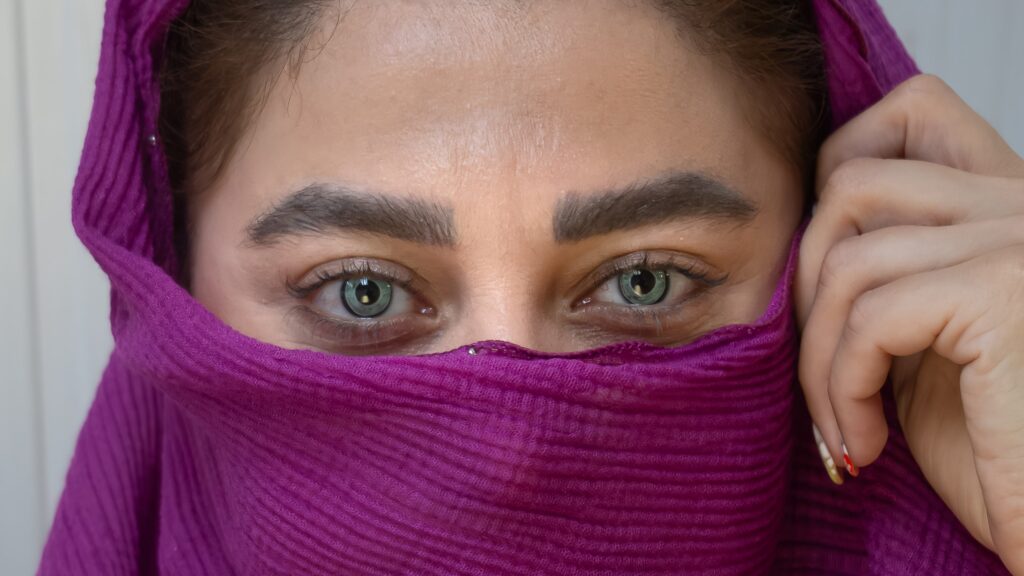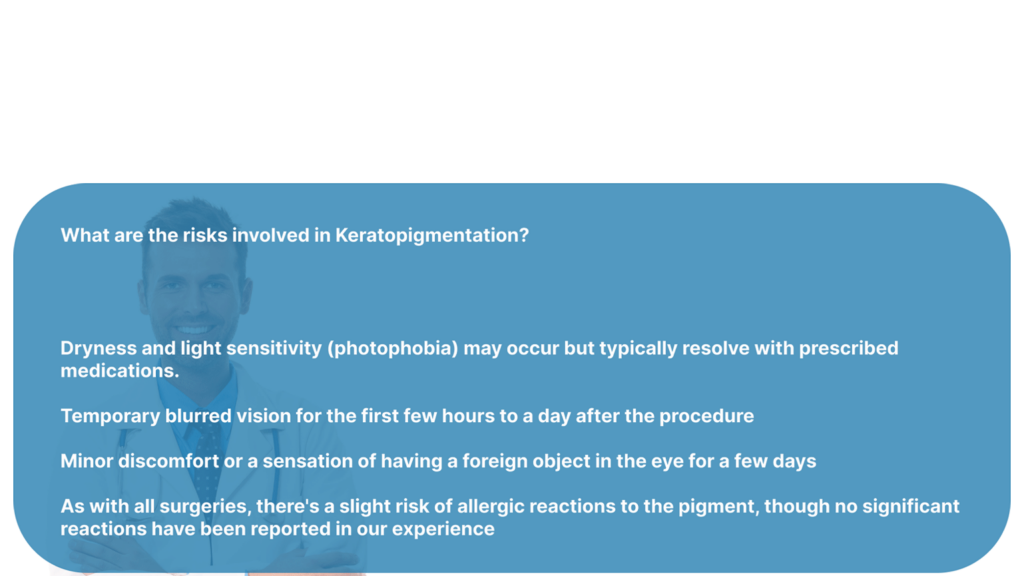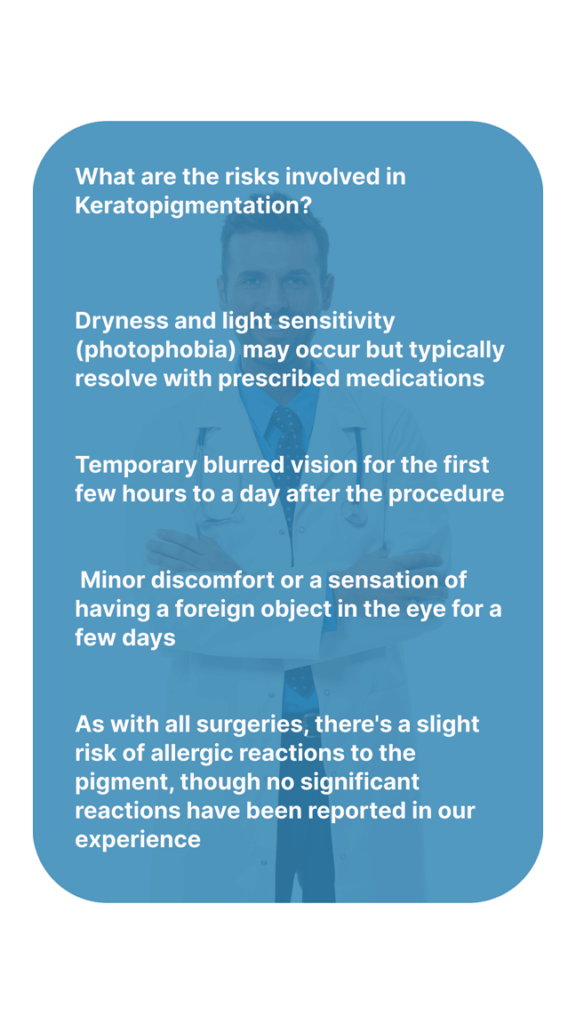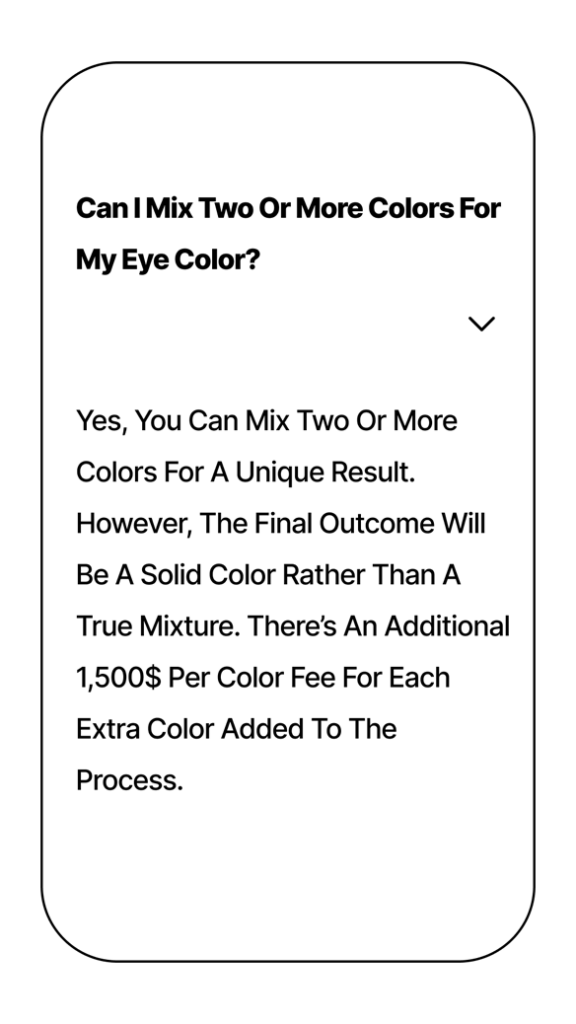Home / FAQ


Frequently Asked Questions (FAQ) about Keratopigmentation at Chromatic eyes
Welcome to the ultimate guide on Keratopigmentation and eye color change at Ceritamed! Here, we address the most common questions and provide you with everything you need to know about this life-changing procedure.
1. What exactly is Keratopigmentation?
Keratopigmentation is an advanced, permanent eye color change procedure that uses cutting-edge technology to inject a special pigment into the cornea (the transparent layer covering the front of the eye). This innovative technique allows you to achieve your desired eye color without invasive surgeries like implants, giving you a natural, permanent color change that enhances your eyes’ beauty.


2. How does the Keratopigmentation procedure work?
The process involves a femtosecond laser, which precisely places a pigment into the corneal stroma (the middle layer of the cornea). The pigment is chosen to match your desired eye color and is safely integrated into the cornea without affecting the pupil or your vision. It’s a quick, minimally invasive procedure that offers a permanent solution for changing eye color.
3. What are the benefits of Keratopigmentation?
- Permanent, natural-looking results: Say goodbye to colored contact lenses and enjoy a lasting eye color change. - Customizable colors: Choose from **39 vibrant shades** to create your perfect eye color. - Non-invasive procedure: No incisions, no implants—just a beautiful new eye color. - Safe and precise: Performed under local anesthesia, the procedure is carefully tailored to your eyes for optimal results. - Minimal downtime: You’ll be back to your daily routine in just a few days.


4. What is included in the procedure cost?
Our comprehensive eye color change package is available for $6,800 USD. This all-inclusive price covers everything you need for a seamless experience: Personalized Consultation: We take the time to understand your preferences and answer all your questions before the procedure. Pre- and Post-Operative Eye Exams: Detailed assessments ensure your eyes are healthy and ready for the procedure, and we follow up to monitor your recovery. Accommodation and Hotel Stays: Stay comfortably in top-rated accommodations during your visit. Transportation Services: From airport pickups to local transfers, we handle all your travel arrangements. Translation Assistance: A dedicated translator will be with you every step of the way to ensure smooth communication. Complete Care and Support: We take care of every detail, from your arrival to post-operative care, so you can focus on enjoying the experience. With this all-inclusive package, you’re guaranteed peace of mind and a smooth, hassle-free process from start to finish.
5. Does insurance cover the cost of the procedure?
Since Keratopigmentation is an elective cosmetic procedure, it is not covered by insurance. However, many patients find the results well worth the investment for a permanent eye color change.
6. What are the risks involved in Keratopigmentation?
As with any cosmetic procedure, there are some risks, but these are rare and manageable: - Dryness and light sensitivity (photophobia) may occur but typically resolve with prescribed medications. - Temporary blurred vision for the first few hours to a day after the procedure. - Minor discomfort or a sensation of having a foreign object in the eye for a few days. - As with all surgeries, there's a slight risk of allergic reactions to the pigment, though no significant reactions have been reported in our experience. We take every measure to ensure your safety and comfort, with ongoing support throughout the healing process.


7. Are there any contraindications for Keratopigmentation?
Some conditions may make you unsuitable for this procedure: - Radial keratotomy (previous eye surgery). - Full-thickness corneal transplants. - Corneal dystrophy, certain glaucoma conditions, or penetrating corneal trauma. - Previous refractive eye surgeries (e.g., LASIK, SMILE) may require special consideration. A thorough consultation with one of our specialists will determine if Keratopigmentation is right for you.
8. Can I undergo the procedure if I’ve had LASIK or other eye surgeries?
Yes, you can still undergo Keratopigmentation even if you’ve had LASIK or SMILE surgery, but your eligibility will depend on factors like the depth of your corneal structure and overall eye health. Our doctors will conduct a full assessment to ensure your eye is healthy and ready for the procedure.
9. How will my vision be immediately after the procedure?
Immediately after the procedure, you may experience blurry vision. This is completely normal and typically lasts for a few hours to a day. Most patients notice significant improvement by the next morning. You may also feel some dryness or light sensitivity, but these symptoms usually resolve quickly with the help of prescribed medications.
10. What if I change my mind and want to return to my natural eye color?
While Keratopigmentation is permanent, it is possible to remove 70-80% of the pigment if desired. Some pigment may remain near the limbal ring (the outer edge of the iris) and pupil, but the overall color can be lightened if needed.
11. Is it possible to adjust the intensity of the eye color?
Yes! The intensity of the color can be customized based on your preference: - Lower intensity gives a more natural look, with a softer, less noticeable color. - Higher intensity results in a brighter, more vivid color. This allows you to tailor your results to your personal taste, balancing natural appearance with boldness.
12. How many procedures can I have with Keratopigmentation?
You can undergo up to two corrections after the initial procedure if you wish to further adjust your eye color. This is ideal for those who want to fine-tune the results or add a slight enhancement to their new eye color.
13. Will my eyes look natural after the procedure?
Yes, most of the pigments used by Chromatic eyes are designed to create a natural look, closely mimicking the eye colors found in nature. While some individuals may notice a slight difference in appearance under certain lighting, the results are generally very subtle and lifelike. More intense colors (higher pigment concentration) will be more noticeable, but they are still highly customizable to suit your preferences.
14. Can I mix two or more colors for my eye color?
Yes, you can mix two or more colors for a unique result. However, the final outcome will be a solid color rather than a true mixture. There’s an additional 1,500$ per color fee for each extra color added to the process.


15. Is it possible to have the procedure on just one eye or in different colors?
For aesthetic reasons, we mostly perform Keratopigmentation on both eyes with the same color. This ensures a harmonious and balanced appearance, both in close-up and under various lighting conditions. But having the surgery done in one eye only is also possible.
16. What if I have dark eyes? Will the procedure work for me?
Absolutely! In fact, the results tend to be more vivid and aesthetically pleasing on dark eyes. If you have darker eyes (level 4 or 5 on the pigmentation scale), Keratopigmentation can create a beautiful contrast and provide a more noticeable change.
17. What are the ingredients in the dye used for Keratopigmentation?
The pigment used in Chromatic eyes' Keratopigmentation is made by Biotic and is CE approved and consists of: - Iron oxide (for brown shades). - Chromium oxides and titanium dioxide (for green shades). - Ultramarine copper phthalocyanine and titanium dioxide (for blue shades). - Carbon black for darker hues. The pigment is made using natural plant-based analogs of propylene glycol to ensure compatibility with the eye and long-term safety.
18. Can I live normally after the procedure?
Yes, after three days, you can return to your normal activities, including sports and makeup. You'll experience a brief recovery period during which your eyes may be sensitive, but by the end of the week, you’ll be back to your usual routine.
19. What is the recovery time like?
While there may be some discomfort and dryness in the first few days, recovery is typically quick. Most people can resume their daily activities within 3 days. Full healing is usually completed within a week, with any residual symptoms clearing up within a couple of weeks. This comprehensive FAQ is designed to help you understand everything you need to know about Keratopigmentation and eye color change at Chromatic eyes. Whether you're curious about the process, risks, or benefits, we’ve got all the information you need to make an informed decision. If you’re ready to take the first step toward a new eye color, or if you have more questions, don’t hesitate to contact us for a consultation!
Telephone consultation
We've got everything you need to make an informed decision about changing your eye color.
Consultation Services
During the consultation process, you can ask all your questions and explore various eye color change methods with our team of specialists. We provide all the essential information you need to make an informed decision about changing your eye color.



